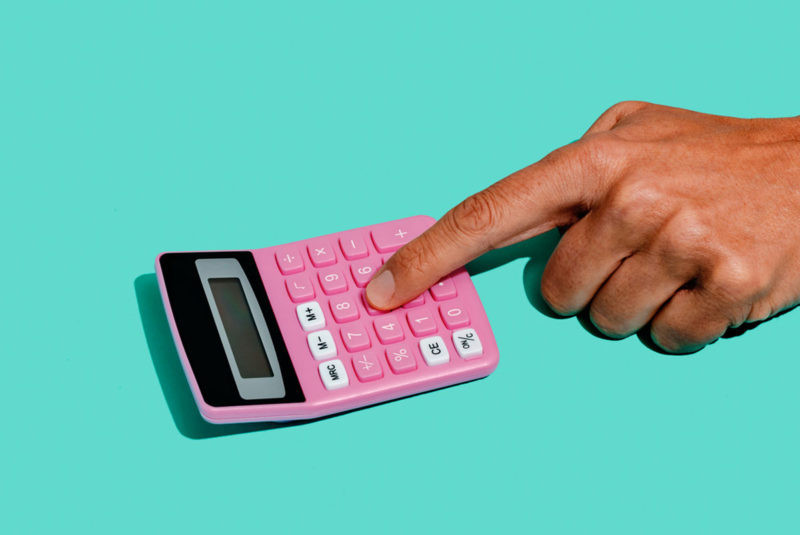You can monitor your creditworthiness by checking your credit scores and reports every year. Some credit card companies and banks allow you to see your credit score daily.
Credit score vs credit report
A credit score indicates how you handle debt, while your credit report reveals details about your credit history. Credit reports provide personal and detailed information about you.
Keep an Eye on Your Credit
With identity theft on the rise, credit report monitoring helps you spot fraudulent activity and errors so you can report them to the credit bureaus. You are entitled to one free annual credit report every year from each of the three credit reporting bureaus.
What’s the difference between a credit score and a credit report?
A credit score is a three-digit number that shows your creditworthiness. A credit report reveals why you have a particular credit score based on your credit history.
Which credit score should you check?
You should check your FICO® credit score from all three major credit reporting agencies. It’s important to check your score from every credit bureau as each has its own rating criteria.
How to get your credit report
You can request your credit report directly from Experian™, Equifax® and TransUnion®. In addition, you can request a free copy of your credit report from Annual Credit Report.
- Online: AnnualCreditReport.com
- By phone: Call 1-877-322-8228
- By mail: Fill out and mail the Annual Credit Report Request Form
What’s on a credit report?
The three major credit monitoring companies are Experian™, Equifax® and TransUnion®. You will find a lot of personal information on your credit report from each of these agencies, including a FICO® credit score.
Here are a few things you will see:
- Payment history
- Credit utilization
- Account age
- Your name
- Current and previous addresses
- Your social security number
- Work history
- Who has pulled your credit report
- Debt collection activity
- Bankruptcy information
- Other important public information
Red flags on your credit report
If you see accounts or an address on your report unfamiliar to you, this is a red flag. A red flag could mean identity theft has occurred and an investigation may be necessary.
How to Monitor Your Credit Reports
- Do-it-yourself: Request copies of your credit reports and check them yourself.
- Use a free service: Free services help you keep tabs on all of your reports.
- Use a paid service: Paid services monitor your credit reports on a predetermined schedule and will alert you to any changes or potential problems.
Do-it-yourself credit report monitoring
If you choose to self-monitor your credit reports, we recommend using a free service. These services list all your accounts and alert you of any new activity.
Free Credit Monitoring Services
“Credit monitoring” may include various services, ranging from bare-bones data to comprehensive reports. These tools let you see how many accounts you have, your overall credit utilization, payment history and your accounts’ average age.
Some services allow you to set alerts when your reports change, while others don’t. You will also get tips to improve each credit score category.
Each provides a paid upgraded version to allow for a deeper analysis of your credit scores and credit reports.
Here are some of the best free credit monitoring services available to anyone 18 years or older.
| Service | Credit Bureau | Credit Score |
| American Express MyCredit Guide | TransUnion® | VantageScore® 3.0 |
| Capital One CreditWise | TransUnion® | VantageScore® 3.0 |
| ChaseCredit Journey | Experian™ | VantageScore® 3.0 |
| Credit.com | Experian™ | VantageScore® 3.0 |
| Credit Karma | TransUnion® and Equifax® | VantageScore® 3.0 |
| Discover Credit Scorecard | TransUnion® for cardholders, Experian™ otherwise | FICO® Score 8 |
| Experian™ CreditWorks Basic | Experian™ | FICO® Score 8 |
We’ll walk you through each option below.
American Express: MyCredit Guide
MyCredit Guide by American Express will show your:
- Payment history: You will see the number of late payments, payoff balances and past due amounts.
- New and established account history: How many open accounts you have and what you recently opened or closed.
- Credit inquiries: You will see when someone has pulled your credit or viewed it.
- Credit card usage: You will see your total utilization, plus your credit history, any new credit cards and both positive and negative adjustments.
- Credit score: VantageScore® 3.0 credit score based on TransUnion® credit reports.
- Alert monitoring: Get notified of any changes to your TransUnion® credit report, like address updates or new inquiries.
Capital One: CreditWise
CreditWise is a comprehensive credit monitoring service based on your TransUnion® credit report.
The CreditWise service will show you:
- Payment history: You can also see which accounts have negative or disputed statuses.
- Oldest credit line: This shows how long you have had credit.
- Recent inquiries: This shows the number of hard inquiries in the past two years.
- Credit usage: Your revolving credit utilization and your available credit. Users will automatically get alerts if their TransUnion® credit reports change for both TransUnion® and Experian™ credit reports.
- New and established accounts: For each account on your TransUnion® report, you can check the lender, type, date opened, credit limit, balance, payment history and more.
- Personal details: Your social security number, old and recent living addresses, employers and work history.
- Dark web activity: You will be notified if your email or passwords have been compromised and on what date.
- Fraud alerts: If your SSN is being used under a different name or address, they will let you know.
- CreditWise simulator: You can use it to estimate how various decisions could affect your credit scores. You can see what would happen if you cancel your oldest card or take out a personal loan, for example.
Chase: Credit Journey
Chase’s Credit Journey provides an overview of your TransUnion® credit report.
Credit Journey will show you:
- Personal information: Shows your name, current and previous addresses, current and previous employers and any consumer statements on your report.
- Public records: You can see the number of public records on your report, with details about each account.
- Inquiries: This shows the number, source and date of any hard inquiries from the past two years.
- Account summary: Includes all your open and closed accounts, both revolving credit and installment loans, with full details, including payment history.
- Credit alerts: You are informed when information on your TransUnion® report changes, like new credit inquiries.
- A score simulator: You can use this tool to predict how your credit scores will react to certain changes, like adding public records or maintaining a record of positive payments over time.
- Credit education: Read and learn more about credit and credit score improvement tips.
- Credit scores: VantageScore® 3.0, as based on your TransUnion® credit reports.
Credit.com
Credit.com provides a basic overview of your Experian™ credit report. You receive a grade in five basic categories.
Credit.com will show you:
- Payment history: Includes the total number of late payments, negative accounts and public records.
- Debt usage: Includes your debt-to-limit ratio, total credit card debt, overall credit limit and the number of accounts with balances.
- Credit age: Includes the oldest account, youngest account and average credit age.
- Account mix: Includes the number of revolving credit accounts, mortgages, auto loans and student loans.
- Credit inquiries: Includes the total number of inquiries and the date of the latest inquiry.
- Credit scores: See your VantageScore® 3.0, based on your Experian™ credit report.
Credit Karma
Credit Karma provides one of the best credit monitoring services, covering both TransUnion® and Equifax®.
You can view a wealth of information about your credit reports and scores, with plenty of helpful explanations and advice.
Credit Karma will show you:
- Credit card usage: Includes credit utilization and shows all your open credit card accounts.
- Payment history: Includes how many late payments you’ve made and your percentage of on-time payments.
- Derogatory marks: Includes the number of collection accounts and public records, like bankruptcies.
- Credit age: Includes the average age of your accounts.
- Total accounts: Includes your account variety and shows all of your open and closed accounts.
- Hard inquiries: Includes the number of hard inquiries in the last two years.
- A rating for each category: You are rated from very bad to very good, along with tips on how to improve.
- Fraud alerts: You will be notified by email alert if there are any changes to your TransUnion® or Equifax® credit reports.
- Credit scores: You can see your VantageScore® 3.0 credit scores for each of those reports.
- Credit score simulator: You can see what happens if you get a particular credit limit increase or if your home has entered foreclosure.
Discover: FICO® Credit Scorecard
Non-Discover cardholders can sign up and see information using their Experian™ credit report. In addition, Discover cardholders can obtain data from both Experian™ and TransUnion® credit reports.
The FICO® Credit Scorecard will show you:
- FICO® Score 8: Based on either your TransUnion® or Experian™ report, this includes the key factors affecting your score, your score history over the past year and how you compare to the U.S. average.
- Total accounts: Includes your credit mix (or account variety), along with the number of revolving credit accounts and installment loans.
- Length of credit: Considers the age of your oldest and youngest accounts, your average account age and shows your credit age.
- Inquiries: Includes the number of hard inquiries you’ve had in the last 12 months.
- Revolving utilization: This shows your overall utilization and how much of your available credit you’re using.
- Missed payments: Includes your payment history and delinquent accounts for the past seven years.
- Alerts: Along with social security number monitoring, you are alerted whenever a new account opens.
Experian™: CreditWorks Basic
Experian™ offers a free version with the most basic credit monitoring features.
CreditWorks Basic will show you:
- Personal information: This shows all the personal details associated with your Experian™ report.
- Account and debt summary: The number of open accounts, delinquent accounts, accounts in collection, average account age and more.
- Overall credit usage: This shows your revolving credit utilization, with your total debt and total credit limit.
- Accounts: Shows details of all your open and closed accounts, like the names of lenders and utilization for each account.
- Collections: Detailed information about each account, including delinquent activity.
- Inquiries: Shows the number and source of each hard credit inquiry.
- Public records: The number of public records, with details about each account.
Paying for a Credit Monitoring Service
You might not want to do your own credit score monitoring. In that case, you can pay for a credit report monitoring service.
We recommend selecting one of the three major credit bureaus or myFICO®. First, choose one that monitors all three of your credit reports.
Then, compare online credit monitoring services with those offered by your bank or credit union to see which one is right for you.
Some paid monitoring services have ongoing fees, while others provide a one-time report for a minimal charge.
What Errors and Fraudulent Activity To Look For
Here are a few things to look out for when monitoring your credit reports:
- Personal information: Is all of your information accurate and up to date?
- Open and closed accounts: Do you recognize every account listed? Are all the dates and lender names correct?
- Account balances: Do the balances listed for your accounts match up to what you’ve spent?
- Credit inquiries: Has anyone else applied for credit in your name? Make sure all hard inquiries on your credit reports were made at your request.
- Payment history: Are there any late payments that don’t belong? If they do belong, are they classified correctly? (30 days late, 60 days late, etc.)
- Negative accounts: Check for bankruptcies and collection accounts – should they be there? If so, are the details correct?
In general, misinformation on your credit reports can come from two sources: legitimate errors and fraudulent activity.
Legitimate errors include misspelled or wrong names and wrong addresses listed.
Fraudulent activity is a bit different – this means someone may have stolen your identity, and they could be applying for credit in your name or using your credit cards.
You will want to report fraudulent credit information and dispute legitimate errors to the relevant credit bureaus in a timely manner.
If you suspect fraudulent activity, take additional steps to protect your identity.
Freeze Your Credit Reports or Set Fraud Alerts
You can take two actions to help prevent fraud and make it more difficult for identity thieves to open accounts in your name.
Credit freeze
A credit freeze will prevent anyone from taking out new credit in your name or performing a hard inquiry on your credit reports. Unfortunately, nobody (including you) can be approved for a credit card or loan in your name until the freeze is lifted, known as “thawing.”
Your credit files at each credit reporting agency need to be frozen and thawed individually. Credit freezes are always available to you free of charge. Conversely, credit locks, considered more user-friendly, sometimes have a fee.
Fraud alert
A fraud alert is like a minor version of a credit freeze. If you place fraud alerts on your credit reports, lenders will have to verify your identity before issuing a credit card or loan in your name.
They’ll contact you at the phone number provided whenever a credit request is made, allowing you to verify the proposal before it goes through.
Unlike credit freezes, fraud alerts don’t wholly stop lenders from extending credit in your name. Instead, it adds an extra verification step.
You will need to place fraud alerts on each one of your credit reports and you can do it easily online:
| CREDIT BUREAU | FRAUD ALERT CENTER |
| Equifax® | Fraud Alerts |
| Experian™ | Fraud Alerts |
| TransUnion® | Fraud Alerts |
Take Control of Your Credit Report
As you can see, monitoring your credit reports is necessary. There are free and paid options to help simplify the process.
With three free credit reports available to you each year, it’s fast and straightforward to do. It’s better to find out if there are any red flags in your credit report before applying for a new loan or credit card.
The Short Version
- If you choose to self-monitor your credit reports, we recommend using a free service. These services list all your accounts and alert you of any new activity
- The three major credit monitoring companies are Experian™, Equifax® and TransUnion®
- You are entitled to one free annual credit report every year from each of the three credit reporting bureaus




